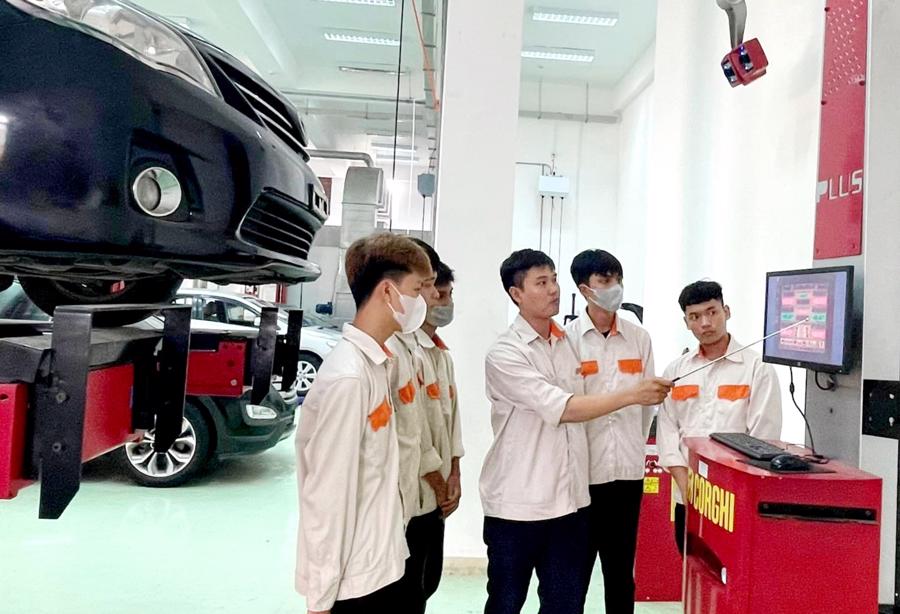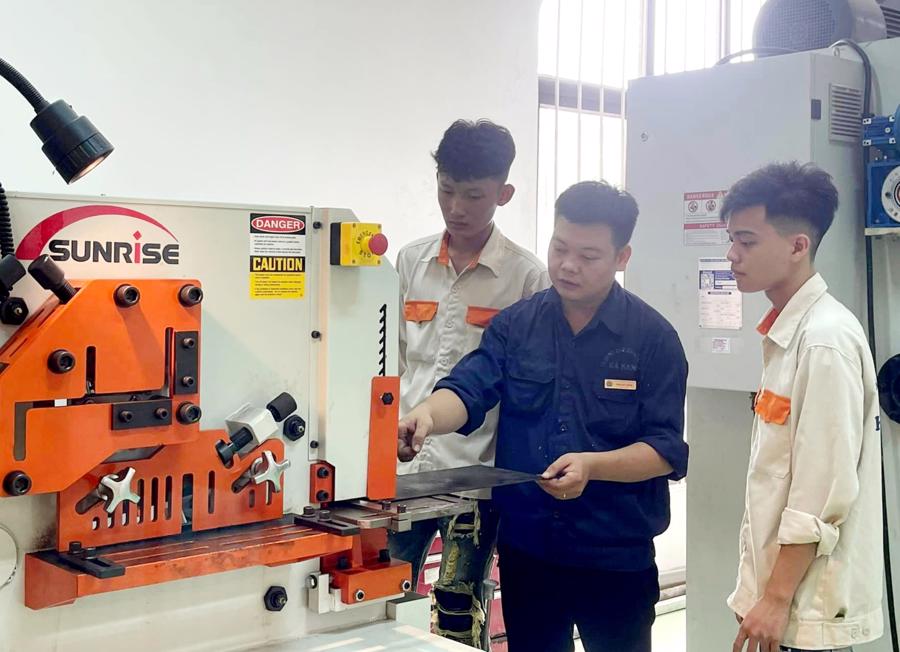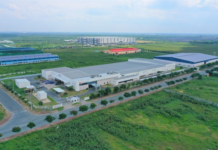Solving this problem requires the involvement of multiple stakeholders, from policy advisory agencies to businesses, training institutions, and the workers themselves.
THE GAP BETWEEN EDUCATION AND INDUSTRY DEMANDS
Mr. Trinh Ngoc Tho, Deputy Director of Business at Viettel Hanoi Construction Branch, under the Viettel Construction Joint Stock Corporation, shared that businesses hiring workers aim to recruit people who can work immediately. However, in reality, with new graduates, the company always has to retrain them from scratch to meet the company’s requirements.
The representative of this unit believes that new workers usually need more time to adapt, but many businesses cannot afford to wait that long.
“Most new graduates, when recruited, need to be retrained from the beginning,” said Mr. Pham Van Tinh, Sales Manager of an automobile company in Hanoi.
According to Mr. Tinh, this retraining is necessary because the practical knowledge gained in schools tends to focus on basic theory. Meanwhile, each car brand has its own unique process for customer interaction and receiving service repair and maintenance information. For example, in this unit, the positions of service advisors, technicians, and sales consultants all require retraining for a period of about 2-3 months.
The training process equips workers with product information, market knowledge, and the company’s sales process. “If we don’t train according to the company’s standards, it will affect the quality of service and, consequently, the brand,” shared Mr. Pham Van Tinh.

From the perspective of a training institution, Dr. Tran Xuan Ngoc, Principal of Hanoi College of Electronics and Refrigeration, believes that the world of work is changing rapidly, and as a result, businesses’ demands on workers are increasing.
With the traditional model, it is inevitable to have a “mismatch” between businesses’ needs and workers’ qualifications. This is because educational institutions train students to meet the general market’s demands, while businesses employ workers for very specific positions.
“This difference inevitably leads to a gap between the needs of businesses and the skills of the workforce,” said Dr. Tran Xuan Ngoc.
TRANSFORMING THE TRAINING MODEL AND FORGING STRONG PARTNERSHIPS WITH BUSINESSES
To fundamentally and effectively address this issue, Dr. Tran Xuan Ngoc, Principal of Hanoi College of Electronics and Refrigeration, suggests that the only way is for training institutions to closely collaborate with businesses and vice versa.
This is the direction that the school is currently pursuing. They invite businesses to deeply engage with educational institutions even while students are still studying; they also implement a flexible training model, with many contents being taught directly at the business premises.
“In the past, we needed a large number of students to form a class for certain training content. But now, with this flexible training model, we can conduct classes at businesses with as few as 5-7 students,” said Dr. Tran Xuan Ngoc.

Depending on the job position, the school’s teachers will collaborate with businesses in designing the training content and the standard set of skills for each internship phase at the company. Along with this, the evaluation of the output is also carried out throughout the students’ internship process and for each skill in the training program.
This approach will motivate students to achieve good academic performance, ensuring that they acquire the standard set of knowledge and skills defined by the school. At the same time, they will be compatible with the job positions offered by each business.
According to Dr. Tran Xuan Ngoc, with this model, the contradiction in the presented problem will surely be resolved. The school is currently implementing this model with Panasonic and LG and plans to expand it to other businesses in the future.
“When workers are best prepared in terms of skills and knowledge, they will surely find suitable businesses. Conversely, businesses also need to create a good working environment and offer competitive benefits. Only businesses that are well-prepared can attract high-quality workers,” added Dr. Tran Xuan Ngoc.
To continuously innovate and improve the quality of training, meeting the increasingly high demands of the labor market, the Ministry of Labor, Invalids, and Social Affairs has implemented synchronous solutions, especially in training aligned with businesses’ needs.
Since 2018, the Ministry has established a task force to link vocational education with the labor market and sustainable employment. This has strengthened the connection between the training activities of educational institutions and the labor utilization of businesses, considering businesses an integral part of the training process of each school.
This process allows students to interact with businesses during their studies. It also provides an opportunity for students to find suitable jobs, and at the same time, businesses can recruit workers who meet their demands.

With the policy of considering businesses as the second training environment outside the school, applying the “dual” training model that combines school and business, many educational institutions have sent their students to businesses for practice, internships, and even to sign employment contracts before graduation. Upon graduation, they continue working for these companies.
Additionally, the Ministry has directed and encouraged a model where vocational education institutions commit to providing jobs for their graduates and refunding tuition fees if they fail to provide employment corresponding to the trained profession.
Currently, the policies supporting and defining the rights and obligations of businesses participating in vocational education activities are clearly stipulated in the Law on Vocational Education and related tax laws. These policies have attracted businesses to engage in the training process of vocational education and employ trained workers.
According to reports from localities and vocational education institutions, over 80% of students who graduate from vocational education programs find jobs immediately.





































